Eight of the world's strangest palnts
strober
Published
04/27/2008
Is it just me or do most of these look like sexual organs?
- List View
- Player View
- Grid View
Advertisement
-
1.
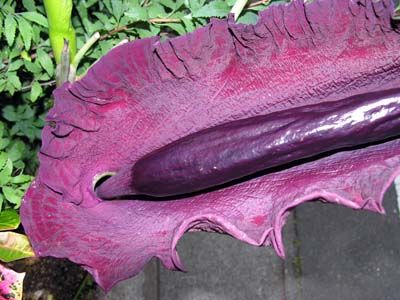 Dracunculus vulgaris: smells like rotting flesh, and has a burgundy-colored, leaf-like flower that projects a slender, black appendage.
Dracunculus vulgaris: smells like rotting flesh, and has a burgundy-colored, leaf-like flower that projects a slender, black appendage. -
2.
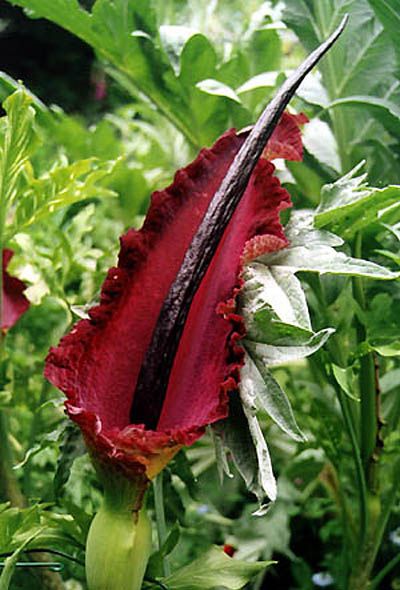 Dracunculus vulgaris: smells like rotting flesh, and has a burgundy-colored, leaf-like flower that projects a slender, black appendage.
Dracunculus vulgaris: smells like rotting flesh, and has a burgundy-colored, leaf-like flower that projects a slender, black appendage. -
3.
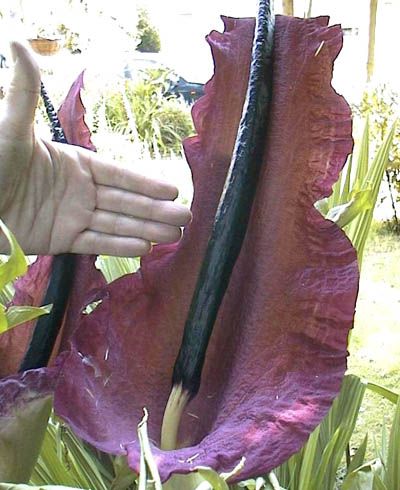 Dracunculus vulgaris: smells like rotting flesh, and has a burgundy-colored, leaf-like flower that projects a slender, black appendage.
Dracunculus vulgaris: smells like rotting flesh, and has a burgundy-colored, leaf-like flower that projects a slender, black appendage. -
4.
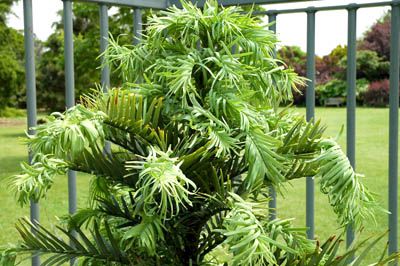 Wollemia nobilis: This bizarre-looking tree was known only from 120 million-year-old fossil leaves before 1994; fewer than one hundred exist in the wild. They have strange bark that looks like bubbles of chocolate, multiple trunks, and ferny-looking leaves growing in spirals. They can grow up to 125 feet tall.
Wollemia nobilis: This bizarre-looking tree was known only from 120 million-year-old fossil leaves before 1994; fewer than one hundred exist in the wild. They have strange bark that looks like bubbles of chocolate, multiple trunks, and ferny-looking leaves growing in spirals. They can grow up to 125 feet tall. -
5.
 Wollemia nobilis: This bizarre-looking tree was known only from 120 million-year-old fossil leaves before 1994; fewer than one hundred exist in the wild. They have strange bark that looks like bubbles of chocolate, multiple trunks, and ferny-looking leaves growing in spirals. They can grow up to 125 feet tall.
Wollemia nobilis: This bizarre-looking tree was known only from 120 million-year-old fossil leaves before 1994; fewer than one hundred exist in the wild. They have strange bark that looks like bubbles of chocolate, multiple trunks, and ferny-looking leaves growing in spirals. They can grow up to 125 feet tall. -
6.
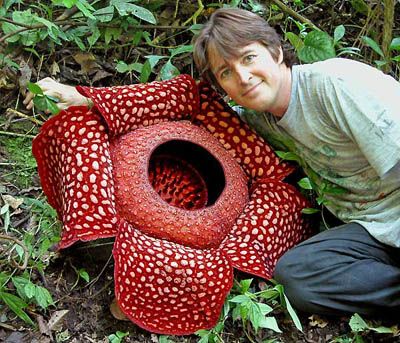 Rafflesia arnoldii: this parasitic plant develops the world's largest bloom that can grow over three feet across. The flower is a fleshy color, with spots that make it look like a teenager's acne-ridden skin. It smells bad and has a hole in the center that holds six or seven quarts of water. The plant has no leaves, stems, or roots.
Rafflesia arnoldii: this parasitic plant develops the world's largest bloom that can grow over three feet across. The flower is a fleshy color, with spots that make it look like a teenager's acne-ridden skin. It smells bad and has a hole in the center that holds six or seven quarts of water. The plant has no leaves, stems, or roots. -
7.
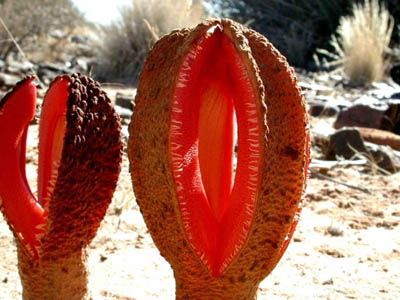 2. Hydnora africana, an unusual flesh-colored, parasitic flower that attacks the nearby roots of shrubby in arid deserts of South Africa. The putrid-smelling blossom attracts herds of carrion beetles.
2. Hydnora africana, an unusual flesh-colored, parasitic flower that attacks the nearby roots of shrubby in arid deserts of South Africa. The putrid-smelling blossom attracts herds of carrion beetles. -
8.
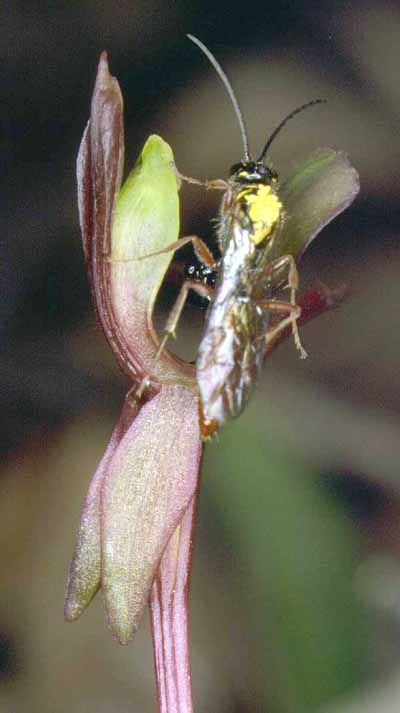 Drakaea glyptodon: an orchid. It is the color of, and smells like, raw meat. Pollinated by male wasps.
Drakaea glyptodon: an orchid. It is the color of, and smells like, raw meat. Pollinated by male wasps. -
9.
 2. Hydnora africana, an unusual flesh-colored, parasitic flower that attacks the nearby roots of shrubby in arid deserts of South Africa. The putrid-smelling blossom attracts herds of carrion beetles.
2. Hydnora africana, an unusual flesh-colored, parasitic flower that attacks the nearby roots of shrubby in arid deserts of South Africa. The putrid-smelling blossom attracts herds of carrion beetles. -
10.
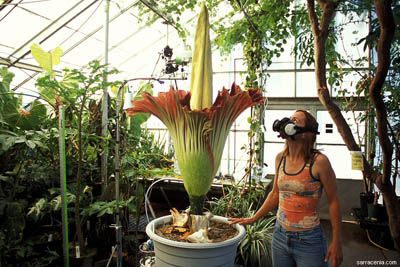 Amorphophallus: means, literally, "shapeless penis." The name comes from the shape of the erect black spadix.
Amorphophallus: means, literally, "shapeless penis." The name comes from the shape of the erect black spadix. -
11.
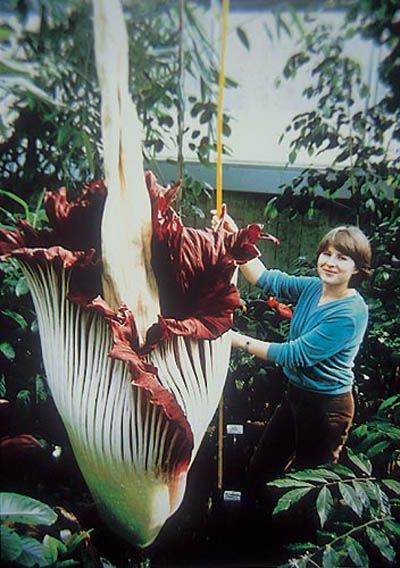 Amorphophallus: means, literally, "shapeless penis." The name comes from the shape of the erect black spadix.
Amorphophallus: means, literally, "shapeless penis." The name comes from the shape of the erect black spadix. -
12.
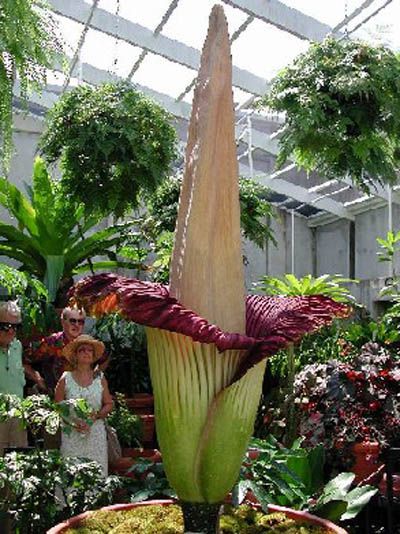 Amorphophallus: means, literally, "shapeless penis." The name comes from the shape of the erect black spadix.
Amorphophallus: means, literally, "shapeless penis." The name comes from the shape of the erect black spadix. -
13.
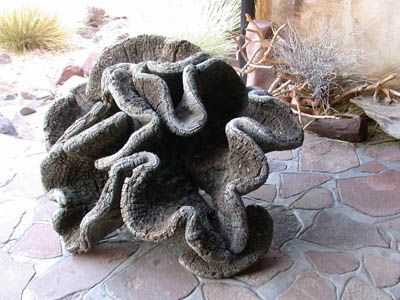 Welwitschia mirabilis consists of only two leaves and a stem with roots. Its two leaves continue to grow until they resemble an alien life form. The stem gets thicker rather than higher, although this plant can grow to be almost six feet high and twenty-four feet wide. Its estimated lifespan is 400 to 1500 years. Mirabilis grows in Namibia, and is thought to be a relic of the Jurassic period.
Welwitschia mirabilis consists of only two leaves and a stem with roots. Its two leaves continue to grow until they resemble an alien life form. The stem gets thicker rather than higher, although this plant can grow to be almost six feet high and twenty-four feet wide. Its estimated lifespan is 400 to 1500 years. Mirabilis grows in Namibia, and is thought to be a relic of the Jurassic period. -
14.
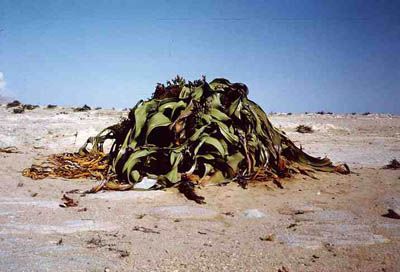 Welwitschia mirabilis consists of only two leaves and a stem with roots. Its two leaves continue to grow until they resemble an alien life form. The stem gets thicker rather than higher, although this plant can grow to be almost six feet high and twenty-four feet wide. Its estimated lifespan is 400 to 1500 years. Mirabilis grows in Namibia, and is thought to be a relic of the Jurassic period.
Welwitschia mirabilis consists of only two leaves and a stem with roots. Its two leaves continue to grow until they resemble an alien life form. The stem gets thicker rather than higher, although this plant can grow to be almost six feet high and twenty-four feet wide. Its estimated lifespan is 400 to 1500 years. Mirabilis grows in Namibia, and is thought to be a relic of the Jurassic period. -
15.
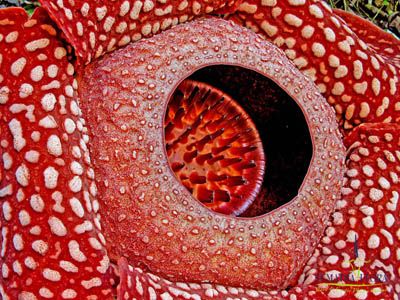 Rafflesia arnoldii: this parasitic plant develops the world's largest bloom that can grow over three feet across. The flower is a fleshy color, with spots that make it look like a teenager's acne-ridden skin. It smells bad and has a hole in the center that holds six or seven quarts of water. The plant has no leaves, stems, or roots.
Rafflesia arnoldii: this parasitic plant develops the world's largest bloom that can grow over three feet across. The flower is a fleshy color, with spots that make it look like a teenager's acne-ridden skin. It smells bad and has a hole in the center that holds six or seven quarts of water. The plant has no leaves, stems, or roots. -
16.
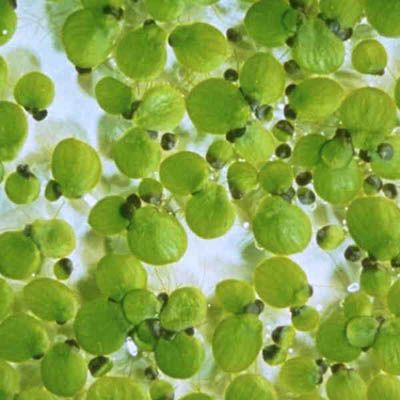 Wolffia angusta: the world's smallest flower. A dozen plants would easily fit on the head of a pin and two plants in full bloom will fit inside a small printed letter "o."
Wolffia angusta: the world's smallest flower. A dozen plants would easily fit on the head of a pin and two plants in full bloom will fit inside a small printed letter "o." -
17.
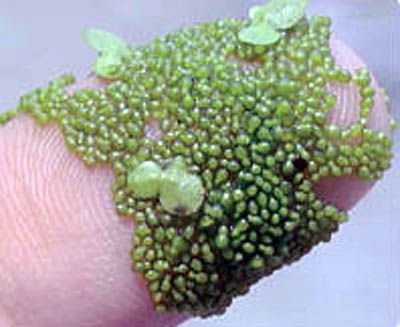 Wolffia angusta: the world's smallest flower. A dozen plants would easily fit on the head of a pin and two plants in full bloom will fit inside a small printed letter "o."
Wolffia angusta: the world's smallest flower. A dozen plants would easily fit on the head of a pin and two plants in full bloom will fit inside a small printed letter "o."
- REPLAY GALLERY
-

- Eight of the world's strangest palnts
Dracunculus vulgaris: smells like rotting flesh, and has a burgundy-colored, leaf-like flower that projects a slender, black appendage.
17/17
1/17



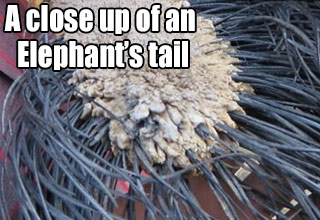


2 Comments